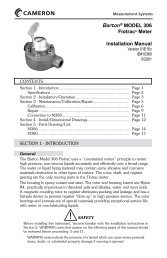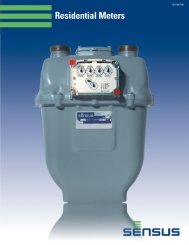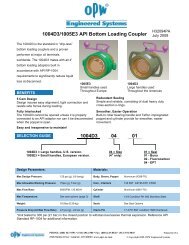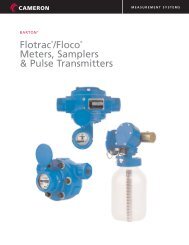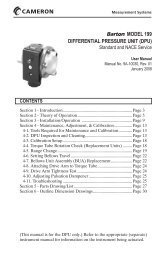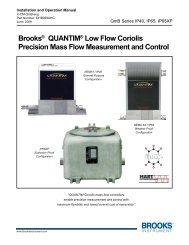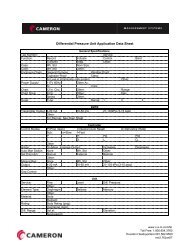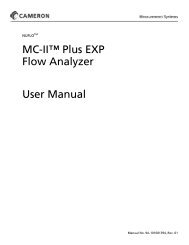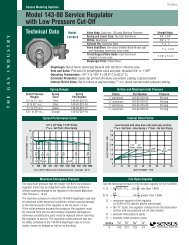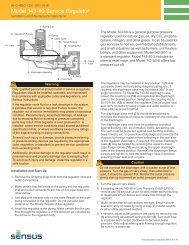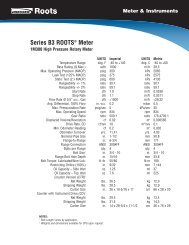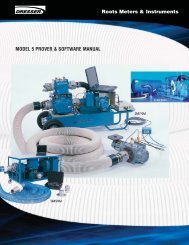Barton Chart Recorder Parts Diagram - TRIONICS
Barton Chart Recorder Parts Diagram - TRIONICS
Barton Chart Recorder Parts Diagram - TRIONICS
You also want an ePaper? Increase the reach of your titles
YUMPU automatically turns print PDFs into web optimized ePapers that Google loves.
Section 2242E Temperature/Pressure <strong>Recorder</strong>-ReceiverStatic pressure introduced through the tubing into the static pressure elementcauses the element to unwind. Conversely, a reduction of pressure within thetubing causes the element to wind up more tightly. This motion is transmittedthrough the lever arm assembly and its intermediate linkage to the pen shaft,which controls the movement of the recorder pen. The pen transcribes the motiononto a rotating chart to permanently record changes in static pressure.Temperature ElementThe thermal system senses temperature changes, using the thermal expansionpriciple. Temperature changes cause thermal expansion and contraction ofmercury in the bulb. When heated mercury expands, it increases in volume,causing the bourdon tube to exert mechanical force. The bourdon tube movementis transmitted through mechanical linkage to a recording pen (Figure2.2—Temperature element on page 7).Thermal BulbThe thermal bulb acts as the sensing element. Its physical and dimensionalcharacteristics determine response time of the system. Large surface area tovolume, minimum wall thickness, and high heat conductivity are desirable forhigh speed temperature response. The metal used in thermal bulb fabricationshould have a minimum coefficient of expansion and low specific heat factor—stainlesssteel is used in the Model 242E thermal bulb.Capillary TubingThe capillary tubing provides a thermal seal between the temperature bulband bourdon tube. The tubing, fabricated from thick-walled stainless steel,minimizes the internal volume for mercury. The capillary is provided with1/4-inch spiral armor to assure a strong and pliable transmission line betweenthe primary element and the secondary mechanism (bourdon tube).Filling FluidMercury's thermal properties make it highly sensitive to temperature changesand suitable for use with a wide range of temperatures.Secondary MechanismThe measuring element is a precision-wound stainless steel bourdon tube,which converts the volumetric expansion and contraction of the mercury-fillto an angular output of 17 degrees nominal for the full temperature range.6



